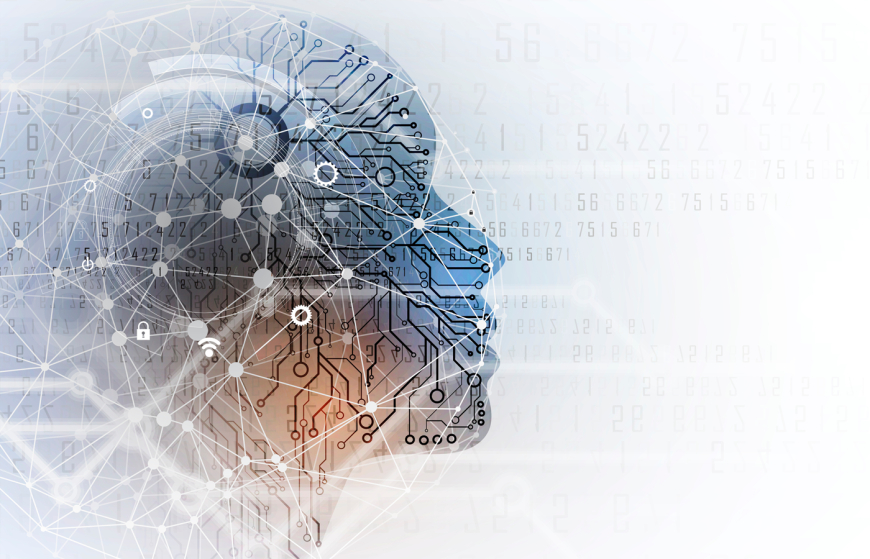Generative AI & Chat GPT

ChatGPT is a generative AI based on Transformer architecture, which generates natural language responses based on the given prompts. It is a type of autoregressive model that produces the sequence of work based on previous tokens. ChatGPT has revolutionized interactions with people, making it seem like one person is talking to another. It was first introduced by OpenAI in 2018 and is based on the InstructGPT, which underwent changes in the data collection setup and was made public for user feedback in November 2022. Users captivated by it have posted on social media about what this chatbot can do—like creating code, essays, poems, speeches, and letters—creating a fear of losing their jobs among content creators. However, verifying the complete applicability of these tools is pending as there are risks associated with this technology that need attention. GPT-2 tools are already on the market and are used for various applications, such as expert conversational agents, language translation, and content summarization. They can analyze work, update their algorithms based on new data, understand new contexts and situations, and integrate them. This continuous analysis creates more accurate responses. It is based on human experience and strengthens education. Human AI trainers provide supervised fine-tuning during conversations. Reward models use AI trainer conversations to rank comparative data and give alternative messages. One of the main advantages of ChatGPT is the ability to communicate with users and learn from them, understand language context, and respond meaningfully and accurately. It can create and continuously improve its extensive database. Therefore, more remarkable capabilities can be expected from this model. Additionally, this model is built on open education architecture, which allows it to achieve high accuracy in content creation.
The ability to learn, understand the context of language and comprehend nuances and meaning to give accurate and meaningful responses while continuously improving through conversations and building an extensive database can lead to the expectation of even more remarkable capabilities from this model in the future. This openly educative architecture has also allowed for high precision in content creation.
Generative artificial intelligence (AI) models have a broad landscape of extensive applications and are used in various domains to help enterprises achieve autonomous intelligence. These models can aid in advancing AI development in diverse fields. In cases of harmful use of generative AI, disinformation dissemination and impact on operations are included. Organizations and governments are working to address these issues through responsible data collection, ethical principles for AI, and algorithmic transparency.
The democratization of artificial intelligence (AI) through new technology platforms has gained significant importance, and giants like Google, Microsoft, and Baidu have challenged each other in the generative AI business. Large language models (LLMs) and generative AI models, like OpenAI's ChatGPT, which have been deployed in the public domain, have created buzz online and in communities by highlighting the potential of AI for human use. Over the past two years, there has been significant momentum in expanding LLMs through online and community engagement. These models can analyze information from the web and other sources and evoke the sentiment of human-human interactions. The possibility of misinformation, bias, and the construction of ethical considerations is controversial during the extensive promotion of these models.
Generative AI Model
Generative AI systems leverage machine learning, training the system on new data or fully immersive audio, video, text, images, art, music, or story simulations. These models practice statistical models and structures from training data and search for new information in various forms from similar, diverse sources. In addition, these models are given extensive training data; when they produce multiple types of unexpected outputs that appear authentic, they appear creative. Variants of generative AI models include variational autoencoders, auto-regressive models, and generative adversarial networks. Generative AI models today cover a wide range of applications, from image and music generation to data augmentation and much more. Content creation tools are now the most crucial field, recognized for being large language models. Various leading companies and laboratories in this field are conducting research and development.
This industry is embedded in its applications:
E-commerce:
Empowering your e-commerce conversations
Education:
Enhancing education through interactive dialogues
Healthcare:
AI-enabled healthcare services
Insurance:
Make intelligent insurance coverage accessible.
News and Media:
Enhancing news experience with intelligent conversations
Energy (Oil and Gas):
Optimizing operations, providing energy to oil and gas
Retail:
Empowering retail with intelligent chatbots
Telecommunications:
Uninterrupted connections, proactive support, instant
Travel and Tourism:
Guiding your travels with virtual skills
Banking and Payments:
Fintech integration with intelligent conversations
Platforms are provided to perform suitable work for various industries.
For example:
Conversational AI Platform:
Enabling seamless human-machine conversations
Chatbot as a Service (CaaS):
Uninterrupted conversations in your services
Video Bot:
Enhancing your visual communication experience
Voice Bot:
Facilitate natural dialogue with voice.
WhatsApp Bot:
Automate, connect and manage conversations.
Signal Bot:
Enhanced conversational support through signals
IVR Bot:
Interactive voice assistance, organized and efficient
Live Chat:
Engaging, real-time human support
News Bot:
Informative conversations for news updates
SMS Bot:
Easy messaging, quick AI responses
Social Media Bot:
Automating your social media presence
Email Bot:
Automate your inbox and streamline communication.
Conversational Ads:
Stay engaged, connect, and convert Interactive advertising.
The results of generative AI models
The challenge of generative AI models is ensuring that the generated data is high quality, balanced, realistic, open to possible biases, and a good representation of the original data. Another problem in this generative AI system is cyber criminals' use of these tools to develop malicious code and tools, including using the dark web to post malware benefits and to share code with the help of tools like ChatGPT (such as for creating stolen goods). One of the negative uses of generative AI is to propagate misinformation and create public perceptions. And impact operations. In addition to spreading misinformation from various malicious actors in these language models, there is an automated capability to generate audio and video that can be used for nefarious activities, according to CSET and OpenAI reports where language models and generative AI have been used for targeted impact operations. Focusing on the rapid development in this area, this model has the potential to become more usable and reliable, making it easier for malicious actors to use it for nefarious activities. Organizations and governments are trying to address these issues through responsible data collection, ethical principles for AI, and algorithmic transparency.
Furthermore, the legal implications of using AI models are also under consideration, especially in various sectors such as healthcare, finance, and security, where regulations and guidelines on data privacy, security, and decision-making are crucial for AI governance. At present, no specific restrictions apply to LLMs or AI language models. However, raising awareness among various stakeholders and civil society is necessary to consider this technology's ethical and legal implications and establish suitable frameworks for its responsible use. Countries are actively working on establishing AI strategies and data protection laws, focusing on AI governance and ethical guidelines for its use. Some initiatives by the OECD aim to provide guidance on moral principles and best practices for AI and to encourage other countries and organizations to follow suit.
The capability to revolutionize how we work and think in the generative AI system lies in bringing forth a transformative ability. By providing diverse sources with meaningful information and offering responsive and adaptable responses to varied listeners, the integration of technology and how we use it in this field has led to significant progress. This technology company excels in AI applications and dives deep into how it operates, making it essential to study the results of this technology and its impact on society.
These AI tools undoubtedly have unlimited potential. Still, at the same time, one must only partially rely on them to make human decisions because of emotional intelligence and human intuition, combined with the complexities of human cognition and language barriers, along with emotional conflicts, prejudices, and risks. Anyone can fall prey to their structural mechanism. There is no one-size-fits-all solution with generative AI systems. Therefore, collaboration among stakeholders such as civil society, government, and other organizations is essential for properly managing and controlling this technology.
India's very own generative AI, 'BharatGPT'.
BharatGPT is a revolutionary new concept, a conversational AI platform that responds with existing generative AI/large language models in 12+ Indian languages, both in text and video.












































